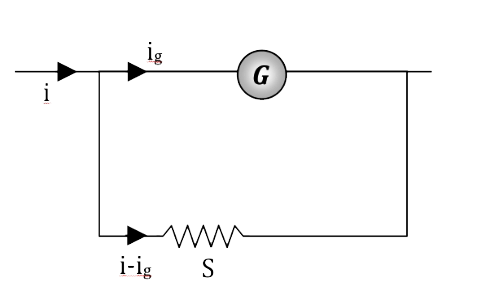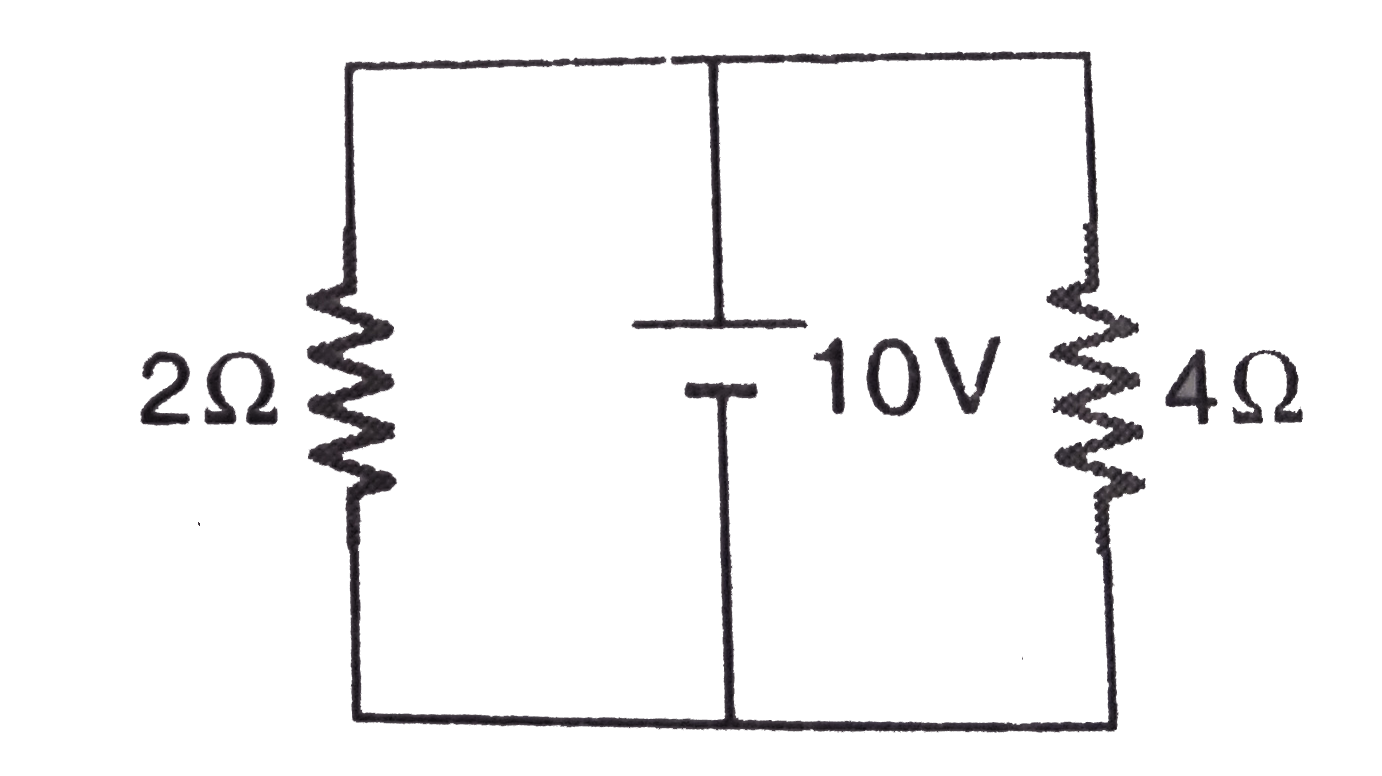A resistor develops 400J of thermal energy in 10 s when a current of 2A is pased through it. (a) Find its resistance . (b) If the current is increased to 4 A, what will be the energy developed in 10 s.
To solve the problem, we will break it down into two parts as specified in the question.
Part (a): Finding the Resistance
1. Identify the given values:
- Thermal energy (H) = 400 J
- Time (t) = 10 s
- Current (I) = 2 A
2. Use the formula for thermal energy developed in a resistor:
H=I2Rt
Where:
- H = thermal energy (in Joules)
- I = current (in Amperes)
- R = resistance (in Ohms)
- t = time (in seconds)
3. Rearranging the formula to find resistance (R):
R=HI2t
4. Substituting the known values into the equation:
R=400J(2A)2×10s
5. Calculating the denominator:
(2A)2=4A2
4A2×10s=40A2⋅s
6. Now substituting back to find R:
R=400J40A2⋅s=10Ω
Thus, the resistance R is 10 Ohms.
Part (b): Finding the Energy Developed with Increased Current
1. Identify the new current:
- New current I2=4A
- Time t=10s (remains the same)
- Resistance R=10Ω (calculated in part a)
2. Use the same formula for thermal energy:
H2=I22Rt
3. Substituting the known values into the equation:
H2=(4A)2×10Ω×10s
4. Calculating the square of the current:
(4A)2=16A2
5. Now substituting back to find H2:
H2=16A2×10Ω×10s=1600J
Thus, the energy developed when the current is increased to 4 A is 1600 Joules.
Summary of Answers:
- (a) Resistance R=10Ω
- (b) Energy developed H2=1600J
---
- Thermal energy (H) = 400 J
- Time (t) = 10 s
- Current (I) = 2 A
H=I2Rt
Where:
- H = thermal energy (in Joules)
- I = current (in Amperes)
- R = resistance (in Ohms)
- t = time (in seconds)
R=HI2t
R=400J(2A)2×10s
(2A)2=4A2
4A2×10s=40A2⋅s
R=400J40A2⋅s=10Ω
- New current I2=4A
- Time t=10s (remains the same)
- Resistance R=10Ω (calculated in part a)
H2=I22Rt
H2=(4A)2×10Ω×10s
(4A)2=16A2
H2=16A2×10Ω×10s=1600J
- (a) Resistance R=10Ω
- (b) Energy developed H2=1600J
Topper's Solved these Questions
- ELECTRIC CURRENT IN CONDUCTORSBook:HC VERMA ENGLISHChapter:ELECTRIC CURRENT IN CONDUCTORSExercise:worked out Example
Explore 33 Videos
- ELECTRIC CURRENT IN CONDUCTORSBook:HC VERMA ENGLISHChapter:ELECTRIC CURRENT IN CONDUCTORSExercise:Objective 1
Explore 15 Videos
- DISPERSION AND SPECTRABook:HC VERMA ENGLISHChapter:DISPERSION AND SPECTRAExercise:Question for short Answer
Explore 6 Videos
- ELECTRIC CURRENT THROUGH GASESBook:HC VERMA ENGLISHChapter:ELECTRIC CURRENT THROUGH GASESExercise:Short answer
Explore 6 Videos
Similar Questions
Knowledge Check
When a current I flows through a resistance R for time t, the electrical energy spent is :
AIRtBI2RtCIR2tDI2R/t
When a current passes through a resistor, its temperature increases. Is it an adiabatic process?
View SolutionAn electric current of 2.0 A passes through a wire of resistance 25Ω. How much heat will be developed in 1 minute?
View SolutionAn electric current of 2.0 A passes through a wire of resistance 25Ω. How much heat will be developed in 1 minute?
View SolutionTo send 10% of the main current through a moving coil galvanometer of resistance 9 Ω, shunt S required is

View SolutionFind the current through 2Ω and 4Ω resistance.

View SolutionA dynamo develops 0.5A at 6V. Find the energy it generated in 1s.
View SolutionCurrent 2 A is flowing through a conductor fo resistance 4 Ω . Find the electrical energy consumedin 10 s.
View Solution

